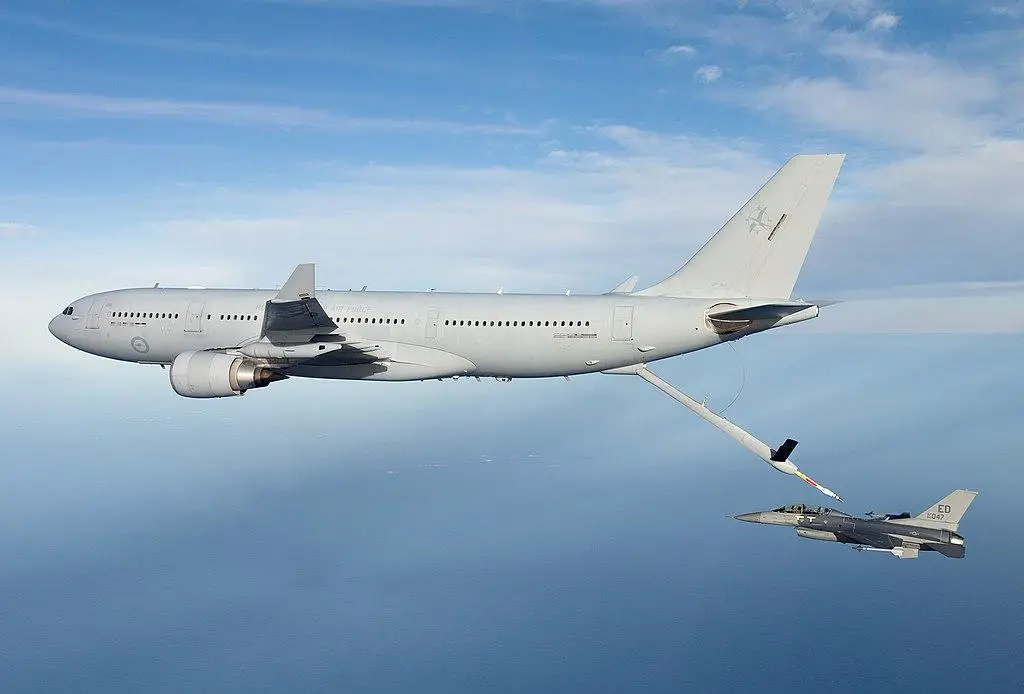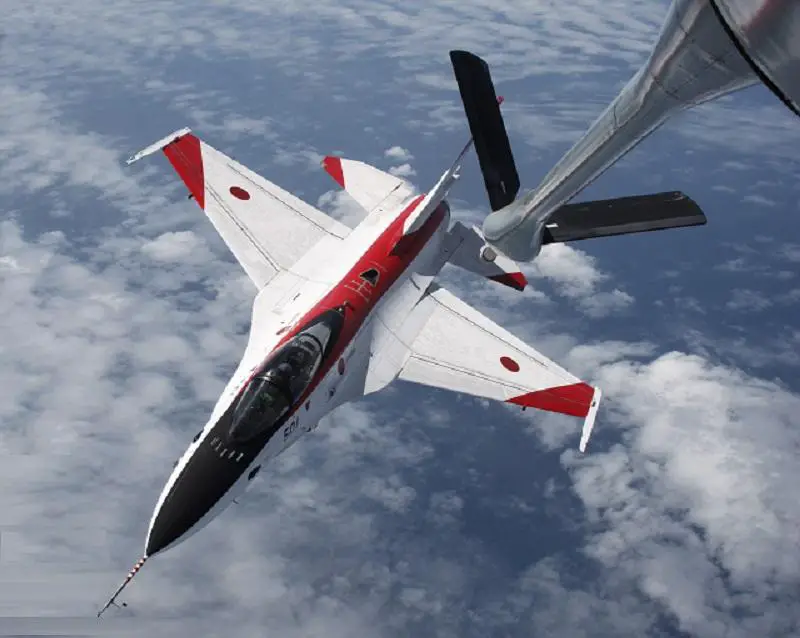A Royal Australian Air Force (RAAF) Airbus KC-30A Multi-Role Tanker Transport (MRTT) has arrived at Komaki Air Base, Japan to start air refueling trials with Mitsubishi F-2 fighters from the Japan Air Self-Defense Force (JASDF). The trials will commence from April 4 to 28. The KC-30A program was behind schedule, but operational use has seen it become the tanker of choice for hose and drogue refueling in-theater. The Airbus KC-30A multirole tanker transport (MRTT) is on track to achieve final operating capability this year with the Royal Australian Air Force.
Designated as KC-30A, the RAAF A330 MRTTs are equipped with both an Aerial Refuelling Boom System (ARBS)[9] and two Cobham 905E under-wing refuelling pods. The aircraft are powered by two General Electric CF6-80E1A3 engines.[9] Australia initially arranged to procure four aircraft with an option to obtain a fifth; this option for a fifth aircraft was exercised to allow for two simultaneous deployments of two aircraft, the fifth being for contingency coverage. Australian KC-30As are operated by No. 33 Squadron RAAF, based at RAAF Base Amberley near Brisbane in Queensland. Australia’s aircraft are configured for 270 passengers plus 34,000 kilograms of cargo.

The Airbus A330 Multi Role Tanker Transport (MRTT) is an aerial refuelling tanker aircraft based on the civilian Airbus A330. A total of 12 nations have placed firm orders for approximately 60 aircraft, of which 51 had been delivered by 30 November 2020. The KC-30A can carry a fuel load of more than 100 tonnes, and transfer part of that load to compatible aircraft, including: F/A-18A/B Hornets; F/A-18F Super Hornets; E/A-18G Growlers; E-7A Wedgetails; C-17A Globemaster III; and Other KC-30As. It is also compatible with refuelling P-8A Poseidon surveillance aircraft, F-35A Lightning II, and foreign aircraft such as the F-16C Fighting Falcon and B-1B Lancer.
The Mitsubishi F-2 is a multirole fighter derived from the General Dynamics F-16 Fighting Falcon, and manufactured by Mitsubishi Heavy Industries and Lockheed Martin for the Japan Air Self-Defense Force. The basis of the F-2’s design is the F-16 Agile Falcon, an unsuccessful offer by General Dynamics to provide a low-cost alternative for the Advanced Tactical Fighter (ATF) competition. The first active electronically scanned array (AESA) radar on a combat aircraft was the J/APG-1 introduced on the Mitsubishi F-2 in 1995. The F-2 is nicknamed “Viper Zero”, a reference to the F-16’s unofficial nickname of “Viper” and the Mitsubishi A6M Zero.

